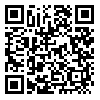Volume 7, Issue 13 (2020)
QHTS 2020, 7(13): 87-128 |
Back to browse issues page
1- Bu Ali Sina University
2- Bu Ali Sina University , mortezaghaemi2@gmail.com
2- Bu Ali Sina University , mortezaghaemi2@gmail.com
Abstract: (2552 Views)
The translation of "Ambiguity", especially in the Holy Quran, is one of the most challenging topic in linguistics. A variety of techniques have been proposed to eliminate it, including the Garces technique. This model using Newmark's views, examines "the amount of positive and negative attributes that indicate adequacy and acceptability of the T.T". The study with a counter-analytical approach, examined translations of Mojtabavi and Saffarzadeh from the part 30 of the Qur'an to improve the quality of translated text, especially in the challenges of linguistic ambiguity, based on a scientific theory and model. And based on statistics, the quantities of these techniques have been compared. And the adequacy and acceptability of each translation is outlined in the first six Surah. The result showed that according to Garcés model, Mojtaba's translation with ambiguous and virtual words has a higher adequacy and acceptance than Saffarzadeh. Saffarzadeh, with unambiguous text, has undergone creative and complex additions to transparency; Especially in virtual vocabulary. On the other hand, in cases that need to be "explained", such as Qur'anic allusions, Mojtabavi's translation is less adequacy and acceptable than Saffarzadeh. Generally, Mojtabavi techniques have a higher level of adequacy and acceptability in disambiguation.
Article Type: مقالات علمی پژوهشی |
Subject:
Arts and Humanities (General)
Received: 2020/02/24 | Accepted: 2020/05/30 | Published: 2020/09/12
Received: 2020/02/24 | Accepted: 2020/05/30 | Published: 2020/09/12
| Rights and permissions | |
 |
This work is licensed under a Creative Commons Attribution-NonCommercial 4.0 International License. |




